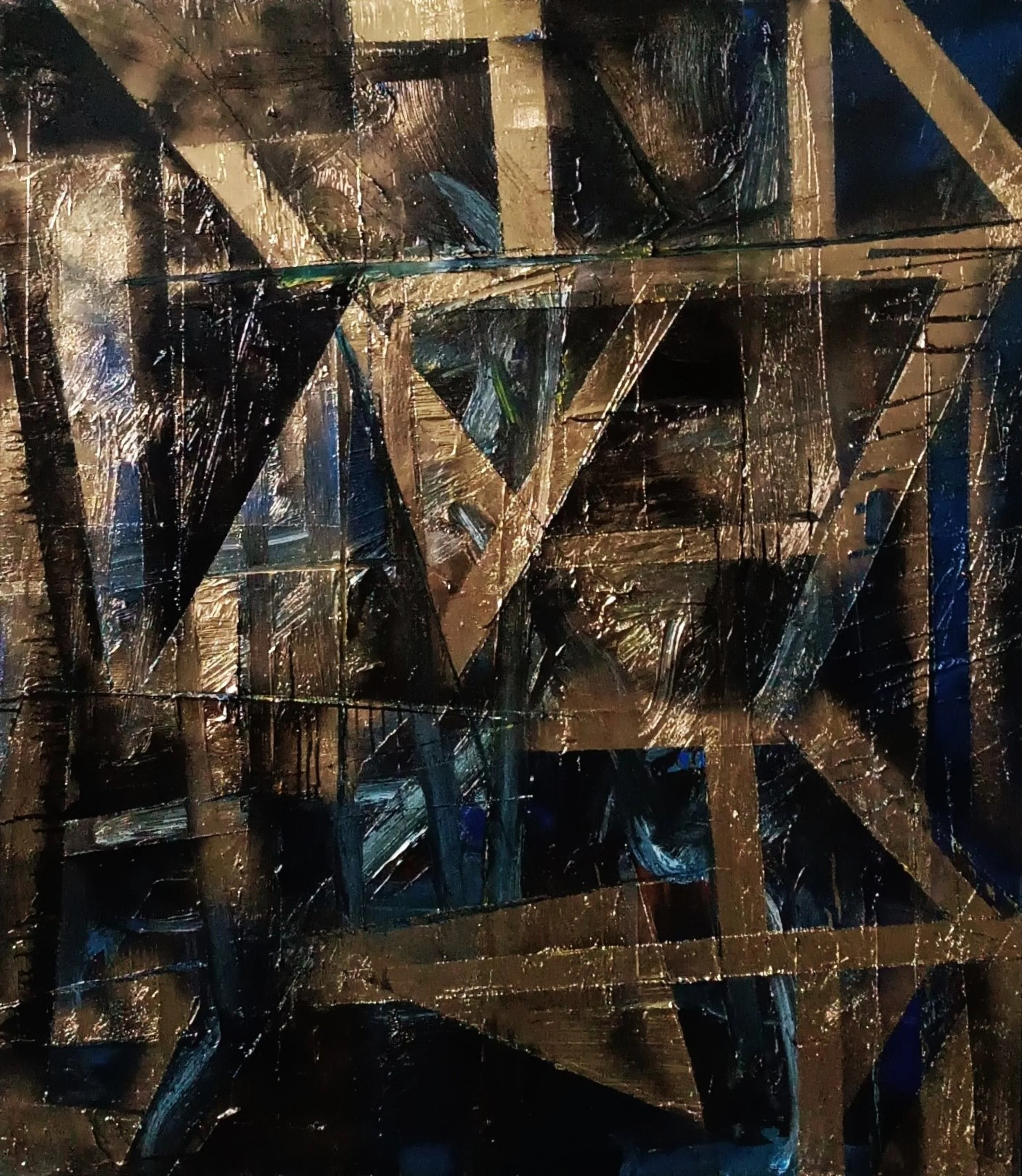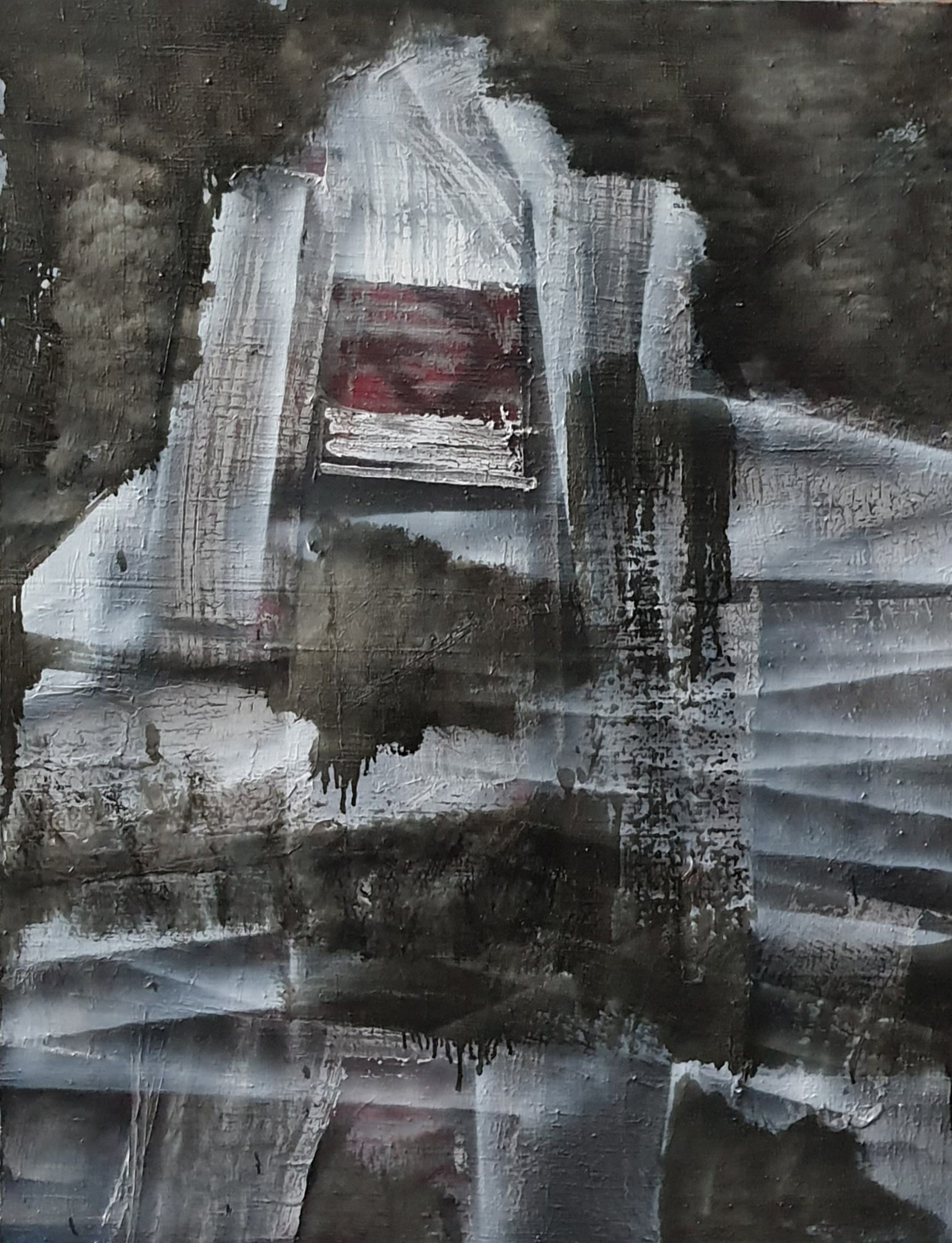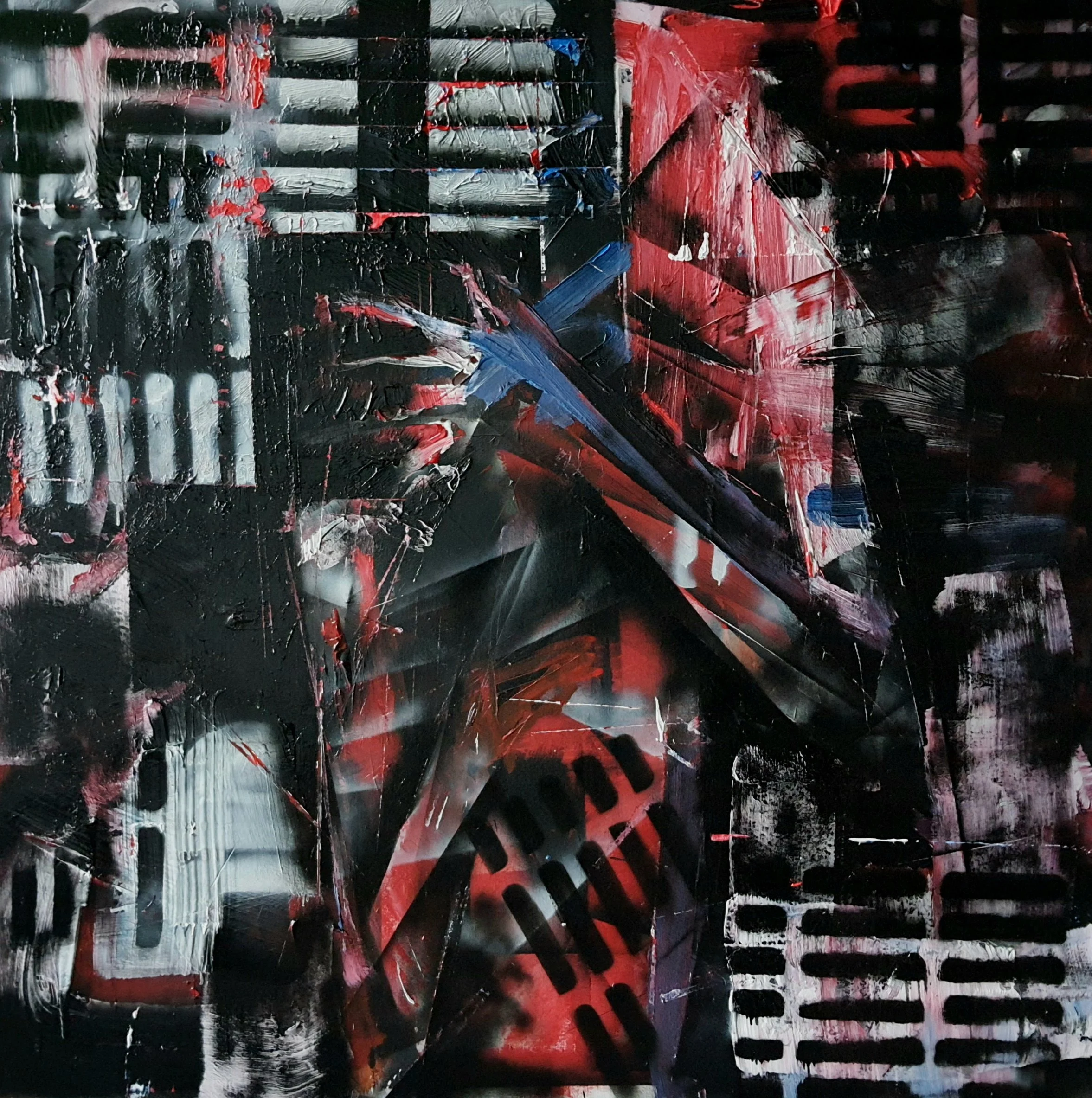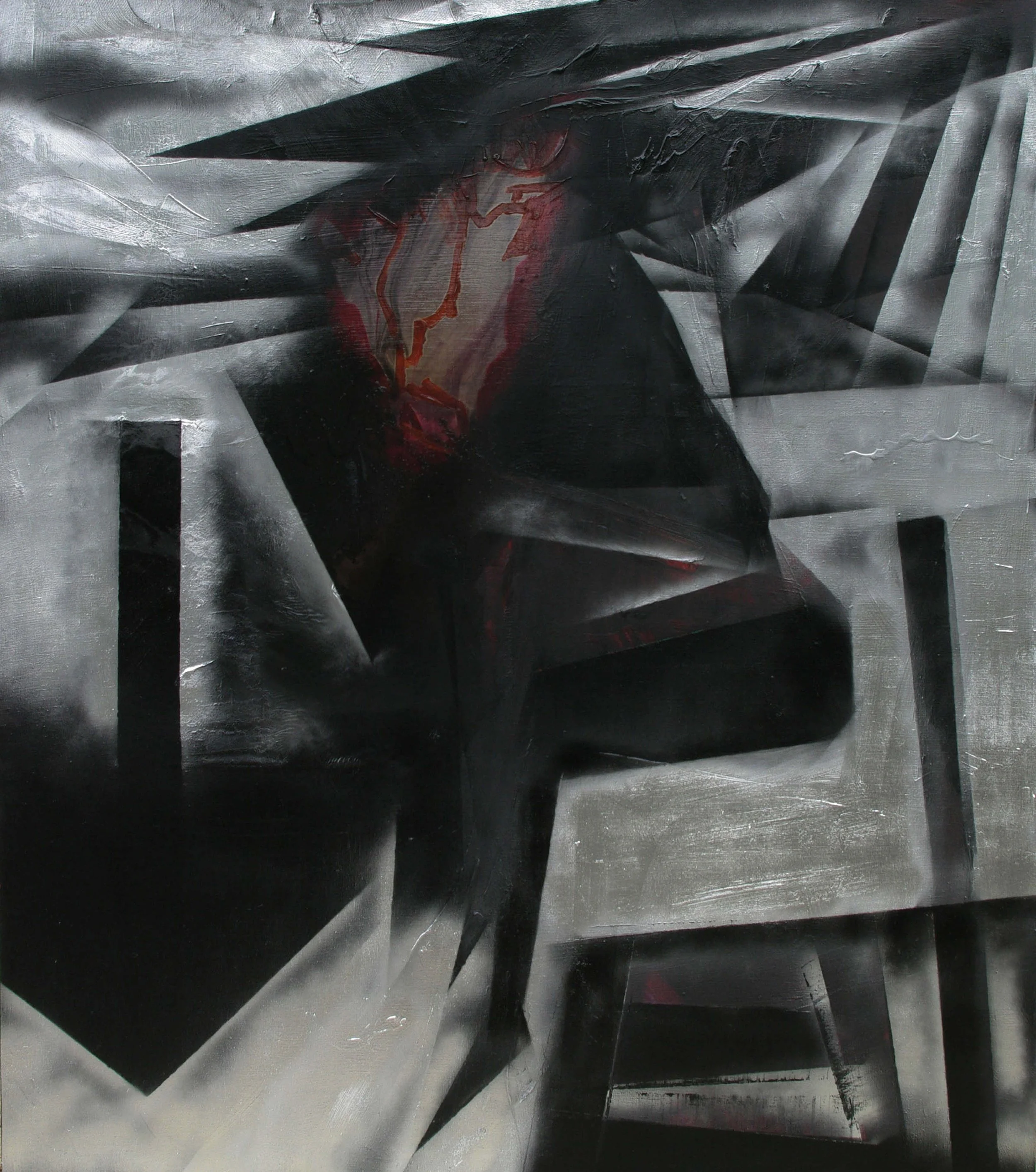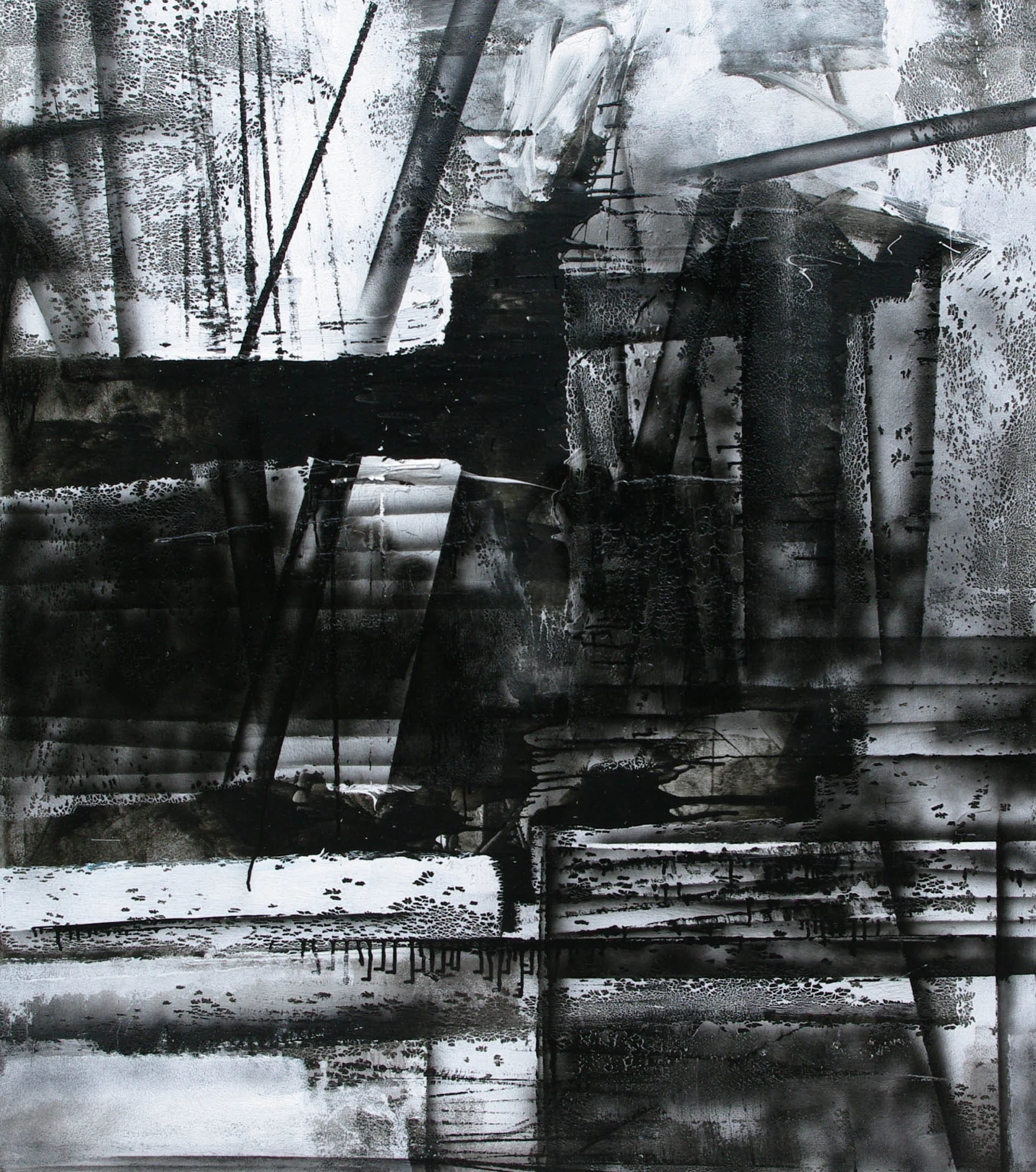Gustavs Filipsons
Gustavs Filipsons
https://gustavsfilipsons.berta.me
Gustavs Filipsons emerges as an intriguing contemporary artist whose body of work presents a compelling case for the vitality of abstract painting in the contemporary art scene. His paintings are a testament to the enduring relevance of abstraction, displaying a profound grasp of texture, form, and the emotive power of color. Filipsons' artworks is an exploration of the abstract expressionism continuum, where each piece offers a unique narrative expressed through bold strokes, layered textures, and an arresting palette.
The oeuvre of Gustavs Filipsons can be contemplated through a philosophical lens, offering a visual counterpart to some of the most profound philosophical inquiries. His canvases are like palimpsests of thought, where each layer of paint may represent a stratum of contemplation, mirroring the complexity of philosophical discourse.
In "Continuity," one might see the echoes of Heraclitus' notion of flux and change — the idea that reality is characterized by a constant state of becoming rather than being. The interlocking shapes and the interplay of light could be perceived as visual metaphors for the eternal flow of time and existence, reminding us that even within seeming disorder, there is a pattern, an underlying order that is not immediately apparent but is continuous and enduring.
"Friend" with its subdued light emerging from darkness, might invite reflections akin to those found in Kierkegaard’s existentialist musings — the idea of the individual confronting the abyss, the solitary human condition facing the infinite. The painting's somber tones and the emergence of light could symbolize hope, the leap of faith that one takes to find meaning in a seemingly indifferent universe.
"Gardener" could be seen through the lens of Voltaire’s advice from "Candide" — "Il faut cultiver notre jardin" (We must cultivate our garden), suggesting that in the act of creation and cultivation, we find our purpose and our place in the world. The textured layers and visible strokes on plywood bring forth the idea of tending to one’s garden, both literally and metaphorically, as an act of shaping one's world and reality.
"Night Sky" could be juxtaposed with the vastness of the cosmos as pondered by the likes of Pascal, who spoke of the "eternal silence of these infinite spaces." The deep blues and blacks interspersed with specks of light could be a visual representation of the existential terror and awe that one feels when contemplating the infinite and our minuscule place within it.
"Snow Woman" might resonate with the philosophical concept of the Sublime as articulated by Edmund Burke or Immanuel Kant — an encounter with nature that is overwhelming and awe-inspiring, yet beautiful in its terror. The stark contrasts and the thick texture evoke a sense of the sublime, the overwhelming power of nature that humbles the human ego.
"Traveller" evokes the journey of life, reminiscent of the allegory of the cave from Plato's "Republic" — the quest for knowledge, truth, and enlightenment. The dynamic forms and the sense of movement in the painting could reflect the journey from darkness into light, from illusion to reality, as we travel through our own lives seeking understanding.
"Unknown" could be seen through the Heideggerian perspective of confronting the "unconcealed," the essence of being that is revealed when we engage with the unknown. The dark tones and structural forms may represent the boundary between the known and the unknowable, the frontier where our existential quest for meaning occurs.
"At The Sea" might remind one of the tumultuous human emotions, aligning with the Stoic philosophy where the sea is like the passions we must navigate, finding tranquility in the midst of life's storms. The chaotic application of paint could represent the constant ebb and flow of existence and our attempts to find serenity within it.
"Runner" can be contemplated alongside Sartre’s existentialist credo of freedom and the responsibility that comes with it. The blurred, abstracted figure, depicted in motion, captures the essence of human existence as a perpetual project, always in the process of becoming, always free to define oneself through action.
"Landscape" invites a meditation on the concept of the picturesque — the aesthetic appreciation of the landscape that encompasses both the beautiful and the sublime. It speaks to the human ability to find beauty in chaos, to construct narratives and meanings from the raw data of sensory experience.
In the broader context of the art scene, Gustavs Filipsons' work offers a bridge between the visual and the philosophical, inviting viewers to engage in a multisensory form of philosophical inquiry. His art does not merely exist to be viewed; it acts as a catalyst for introspection, a visual philosophy that asks more questions than it answers, compelling us to explore the depths of our own understanding and to confront the myriad complexities of existence.
Gustavs Filipsons' placement within the art scene is that of a contemporary painter who is deeply aware of his historical predecessors yet is unafraid to forge his own path. His work resonates with the tactile, visceral qualities of abstract expressionism while also engaging with the conceptual rigor of post-modernism. Filipsons stands out for his dedication to the medium of painting and his ability to continually push its boundaries.
In the contemporary art world, where the digital often overshadows the handmade, Filipsons' paintings serve as a reminder of the power of the artist's hand and the enduring language of paint. His works are held in private and public collections, and he is a staple in exhibitions that seek to explore the edges of abstract painting.
As an artist, Gustavs Filipsons is an important voice in the ongoing dialogue about what painting can be in the 21st century. His artworks are a celebration of the medium's potential for innovation and emotional resonance. They invite us to engage with the abstract as a form of personal and collective expression, challenging us to see beyond the visible and to find meaning in the interstices of paint, texture, and form.
His canvases are not mere surfaces upon which color is applied, but rather they are arenas for the engagement of the mind and the senses. Through his art, Filipsons seems to grapple with the eternal questions of existence, identity, and the cosmos, translating complex philosophical ideas into the wordless language of paint and texture.
Filipsons' work invites us to reflect on the human condition, to contemplate our place in the world and the universe. His paintings, with their intricate layers and evocative forms, serve as a mirror, reflecting back to us not just our own image but the very act of perception itself. Each piece is a dialogue between the artist and the viewer, a silent conversation that continues long after one has looked away from the canvas.
In the contemporary art world, where concept often supersedes craft, Filipsons remains committed to the tactile, to the act of creation itself. His work is a testament to the enduring power of abstract art as a means of philosophical and existential exploration. It is art that demands engagement, that rewards the viewer not with easy answers but with the richness of inquiry and the beauty of the unknown.
Filipsons' art exists in the intersection between the seen and the unseen, the known and the unknowable, the tangible and the intangible. It is a compelling reminder of the vastness of human creativity and the potential of art to express the inexpressible. In a world increasingly dominated by the ephemeral and the virtual, Gustavs Filipsons' paintings stand as beacons of the enduring and the profound, inviting us to pause, reflect, and perhaps, to understand a little more of the mystery that is life.
By Marta Puig
Editor Contemporary Art Curator Magazine
''Continuity'',2023,150x120cm,oil, acrylic on canvas.
''Friend'', 2023, oil, acrylic on canvas, 100x100cm
''Gardener'',2021.oil,acrylic on plywood,120x160cm
''Night sky'', 2023, oil, acrylic on canvas, 100x100cm
''Snow woman'',2021,oil,acrylic on canvas,150x130m
''TRAVELLER'',2021,Gustavs Filipsons,160x160cm,acrylic on canvas.
''Unknown'',160x120cm,acrylic on plywood,2023
AT THE SEA,2016(160x140cm)oil,acrylic,spray paint on canvas,Gustavs Filipsons
Gustavs Filipsons,LANDSCAPE,2020,oil,acrylic on canvas,140x160cm
Gustavs Filipsons_''Runner''_oil,acrylic on plywood_140x140cm


